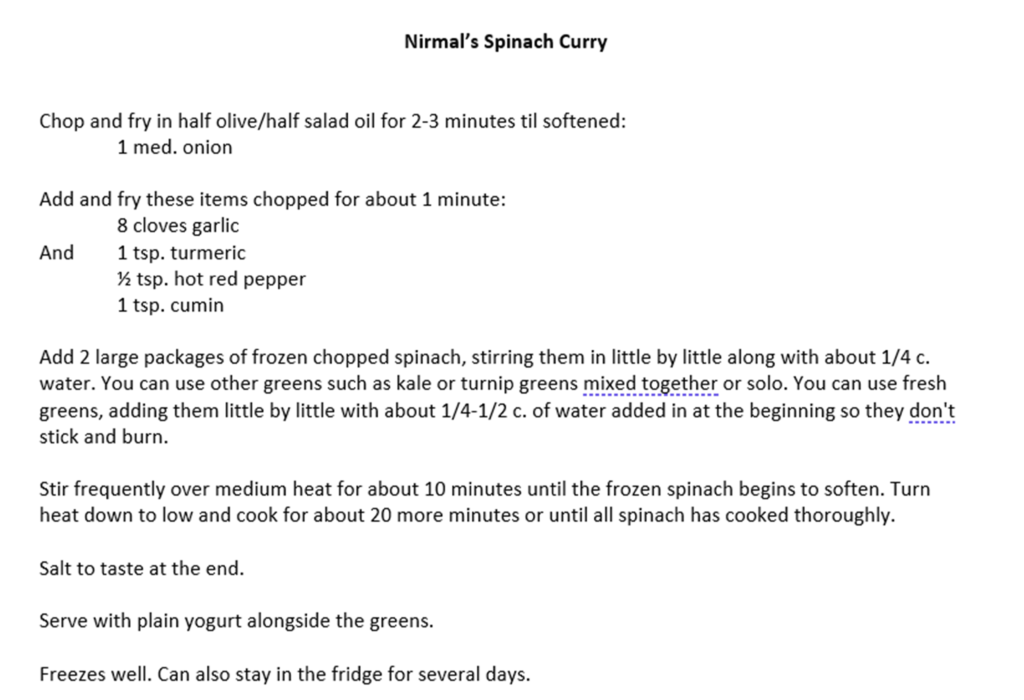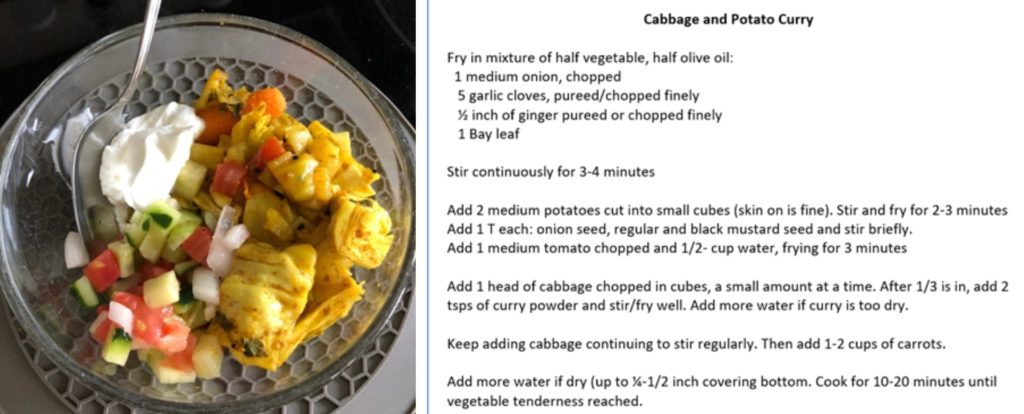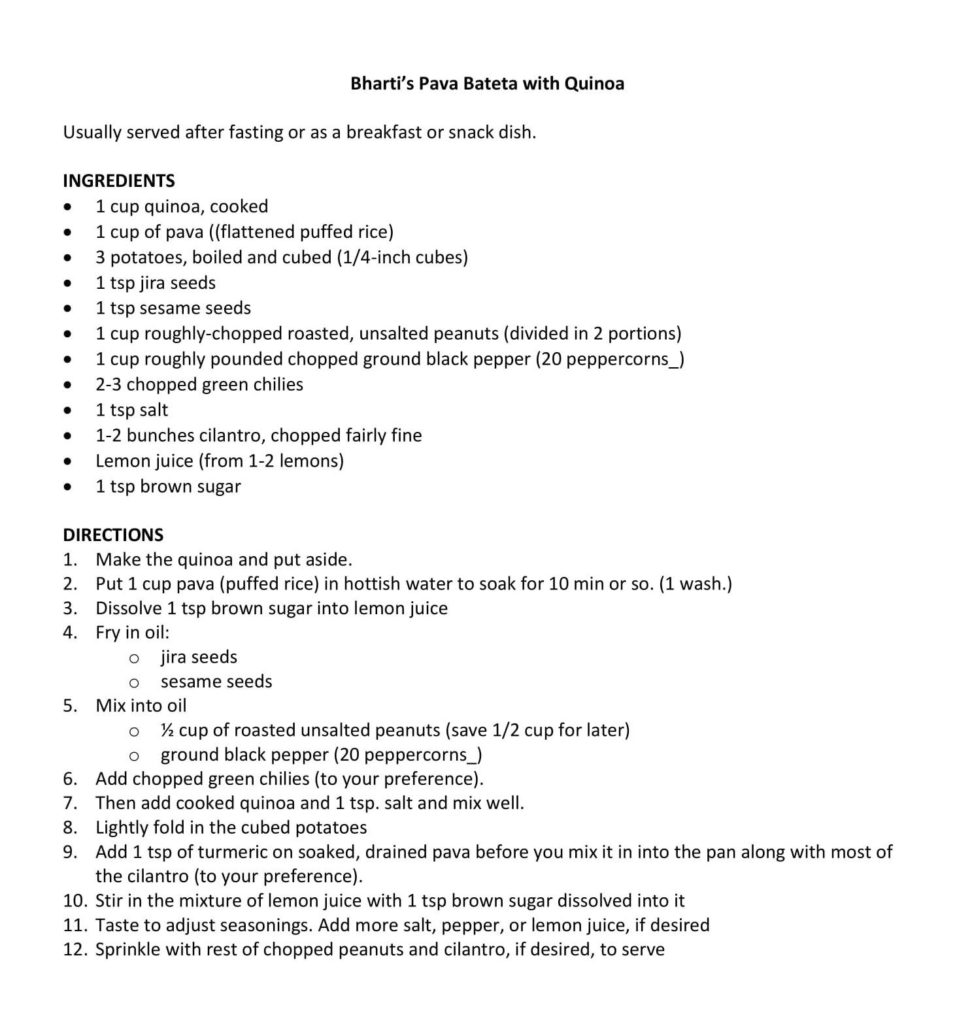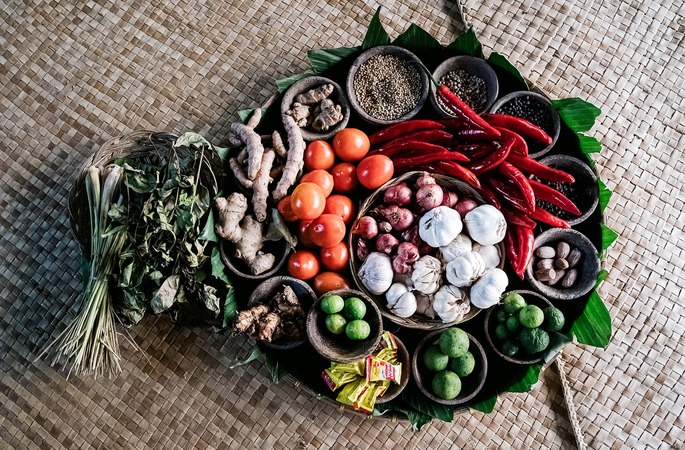I still remember a few months ago when I unexpectedly blurted out on a video call to Shameela, the editor of FemAsia, that I’d write this article. This came out right after I told her about the wonderful Sprouted Dal recipe I had just made, which I learned in the mid-1990s from my Kenyan Indian friend. And then said, “I should write an article about this – how Bharti, an excellent cook, innovated her own recipe.”
I reflected on what I wanted to write about Bharti teaching me this recipe in her kitchen in Nairobi. And then, I realized that I had a long journey of my learning to make various dishes from the South Asia region. And that journey always took place in kitchens worldwide, starting more than 45 years ago.
Mom’s Lamb Curry (in the US, the early 1970s)

My first awareness of “curry” was in my early 20s when my mother made “Lamb Curry.” My sisters and I still can’t figure out where my mother found the recipe and tried it. She only made it a couple of times a year because, in the Northeast of the US where we lived, the lamb was only available in the spring. And that was probably convenient as well as she was feeding 8 children who, along with our Dad, LOVED it. My memory of the curry is that it was sweet (from the apple and raisins) and not spicy. (That’s why I assume she found an Americanised recipe in a magazine or her Caribbean travels.)
But I have never made this recipe!
Rice – and Egg Curry (from Willie in Turkey, 1977)

My world views greatly expanded in 1976 when I moved to Ankara, Turkey, to live with the man who would become my first husband. He worked for CARE and had been posted to Tamil Nadu and Dhaka, where he embraced South Asian food, clothes (dhoti and various shirts for home), and the culture. He wanted me to learn to make “Indian Food.” I learned a lot from his stories about eating hot curries about his expectations of what I could learn to cook, and his “test” for me was to make perfect rice. I never mastered rice-making (despite having a few Turkish friends give me lessons) until a friend taught me to make rice in a pressure cooker. Soon rice cooking wasn’t a torment. It was flawless every time.
A friend, Willie Wright, who had also been in South Asia before Ankara, made Egg Curry for us one night – and gave me my first curry recipe. And I made it. I found a coconut and the few spices I needed in a market in Ankara, grated the coconut, did the 2 different coconut milk soak/strainings, and made a reasonable version of Egg Curry. I make it occasionally still but often take the shortcut of using tinned coconut milk.
Alu Gobi (from Sita in Kathmandu, Nepal, 1980)

We moved to Kathmandu, Nepal, in 1978. I loved the cook-housekeeper, Sita’s, Nepali food, especially Alu Gobi. When I learned that we were moving to West Africa, I watched and learned from Sita how to make Alu Gobi. And I tried it a couple of times before we left for Niger. It was the first time I had to judge a cook’s amounts to write down a recipe!
Mutton Do-Piaza (from the Jeggles in Delhi Transit Stays, 1979)

Our trips in and out of Kathmandu transited through Delhi, where we stayed with friends and foodies, Terry and Char Jeggle. I watched Terry make this Mutton Do-Piaza in their kitchen. And I have made it a lot since then.
Timzi’s Samosas (in Niamey, Niger, 1982)

When we moved from Nepal to Niger in West Africa, I took some spices with me, but they didn’t last very long. I replaced them each year when we went on home leave, but I could never bring enough to last almost a year. Once, I brought cilantro seeds back from the US and started them in a small pot. But the strong sun and very arid desert environment meant I got only a few small sprigs! Nevertheless, I was able to make a few South Asian dishes each year in Niamey.
And I did learn a new South Asian recipe from Timzi, the wife of the Pakistani Ambassador to Niger – Timzi’s Samosas! I made them when I had a craving for samosas and none nearby to purchase.
When we went on home leave to the US each summer, I made South Asian dinners for the family, although spices and foodstuffs were still hard to come by. We lived outside of Boston, and I remember driving 10 miles to the next town over to buy a bunch of cilantro, the only place outside of Boston to get cilantro in the early 1980s! But I still had to parcel out the spices – and bought them on the rare occasion of finding a market that sold “Asian Specialities”!
Saag (from Nirmal in Dhaka, Bangladesh, 1986)

We were happy to return to South Asia in the mid-1980s, and we had a wonderful cook-housekeeper, Nirmal, in Dhaka, Bangladesh. My favourite dish was Nirmal’s Saag which he called “red spinach” in English. He often made red saag which I finally discovered was from the amaranth plant – and which I was unable to find in the US. This was my all-time favourite saag, and the recipe he taught me also makes great saag with any other kinds of leaves.

That was our last South Asia posting, but we were lucky that global travel had increased, and I could find South Asian spices and food supplies in more places. I also collected cookbooks (in English) in South Asia and experimented with recipes from them.
Curry Dinners (in the US, 1995-2010)

We relocated to the US in 1995 when Frank retired from CARE. And, finally, in the US, I had no problems getting everything I needed to make South Asian food. I didn’t have to grind my own spices anymore, so I didn’t. But I did cook from scratch. It helped that the 2 men in my family loved “curry dinners,” although these were more celebratory meals, primarily because I worked full time. I developed a process and timeline to turn out a meal of lamb or chicken, dal (made the Nepali way with almost no spice), saag, alu gobi, cabbage and potato curry, raita, kachumber, yoghurt (store-bought!) and mango pickle (also store-bought!), all in a half-day.
Cabbage and Potato Curry (in the US, 2010)

The Cabbage and Potato Curry recipe came from one of my South Asian cookbooks –and I am glad I wrote it out for a friend years ago since I don’t know where the original recipe is now. I never refer to the recipe anymore, although I make it frequently, and I add more types of seeds and carrots and sometimes other vegetables. And I don’t always include potatoes now.
Bharti’s Sprouted Dal (from Bharti in Nairobi, Kenya, 1999)

In the late 1990s, I frequently made trips to Kenya for work, and those trips always included a delicious lunch or dinner at Bharti’s house. One lunchtime, she served us her Sprouted Dal, and I was over the moon. She gave me the leftovers to take back to the house where I was staying in Nairobi. And then I begged her to teach me the recipe before I left Nairobi – which she graciously did. As I was in her kitchen learning it from her, she told me that she’d made up the recipe, experimenting with it. And she was another person that I watched make something wonderful while I was trying to judge her spice “amounts”! (You can see in the recipe, some items don’t have amounts, but I’ve managed to come close to her version.)
So, back in the US, I tried to find the exact “muth” dal, which was hard to find for a decade or so. I began using mung dal, and that was delicious as well.

Below is the version I made in early 2021 with much dal that I found late in 2020 at our nearest Asian goods store. I documented all of it (including the several days of sprouting). This picture shows the 3 stages of assembling the ingredients. It makes my mouth water just to see this photo!

I love to cook – and eat – my own South Asian cooking.
But not as much as I love to eat these dishes prepared by someone else either at their homes or in restaurants!
Epilogue: The Article Was Finished – I Thought
We’re not done yet.
I wanted to check with Bharti about using her photo and making sure I’d remembered the Sprouts story. We finally got together in person because both of us had been vaccinated. She said, “Come over on Thursday afternoon and we’ll have a cup of tea.” I knew enough to know that meant a snack as well!
But I didn’t know I’d get another cooking lesson while making our snack for tea. And this time, I got to document every step while writing down the ingredients (and amounts) for another one of Bharti’s innovative recipes – Pava Bateta with Quinoa.



My thanks go out to all the people who helped me become a reasonably good South Asian cook over the past several decades, especially Bharti!



